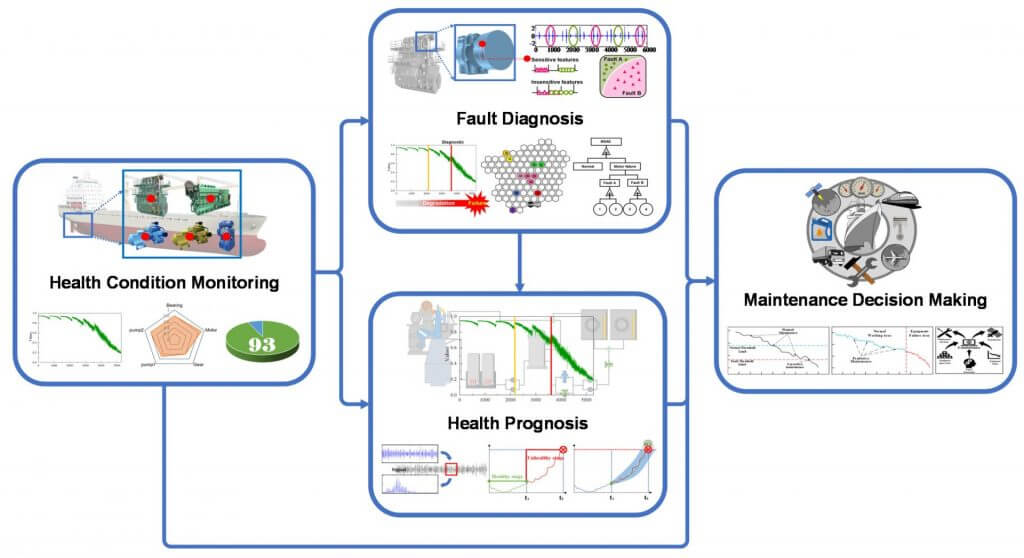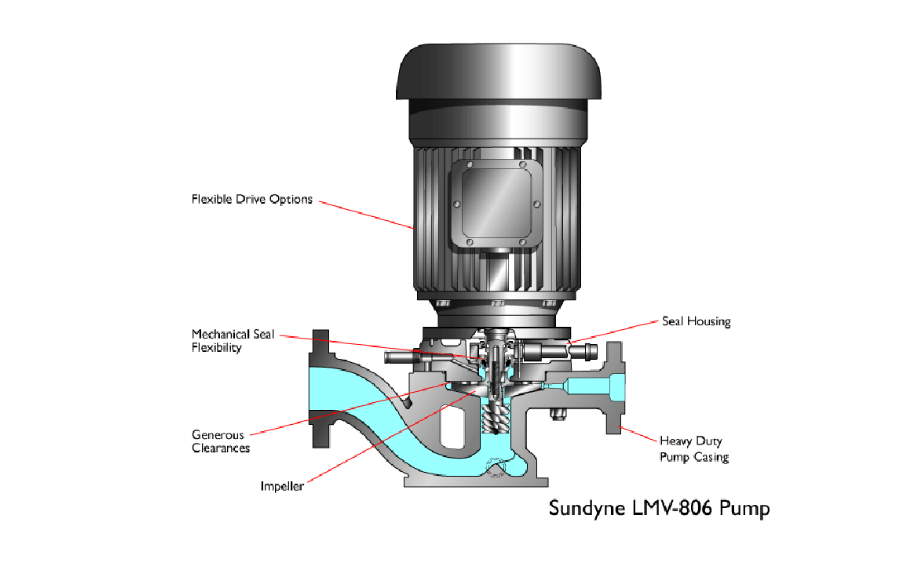Table of Contents
- Introduction
- Machines are put into service to fulfill a specific function .
- What are pressure pulsations?
- Prognostic Health Management (PHM)
- What are these primary elements of the mechanical system?
- According to the monitoring, this will be the maintenance of your equipment.
- A faulty pump causes the closure of a refinery
- Turbines.
- Conclution.
- Bibliographic references.
- For more articles visit https://inspenet.com/
Introduction
Among the most challenging aspects of the job of a machinery professional or vibration analyst; is to decide whether a running machine should be taken out of service due to a detected problem or allowed to continue operating.
When an analysis of all the data is carried out, it issues an erroneous recommendation to carry out a repair, the spare parts are wasted, the remaining useful life of the machine, the loss of opportunity by not having the asset. But if the recommendation is correct, it can prevent serious consequences, such as product leaks, fires, costly collateral damage to the machine and the plant, etc. This economic equilibrium point is at the heart of all machine analysis and evaluations.
Now, if after this introduction you do not feel encouraged to take care of your assets with greater determination and achieve availability and obviously better performance, which translates into higher production and profits, which is the main objective of any business in the field of the gas and oil industry, then, you are collaborating so that your equipment deteriorates and inevitably fails!
Machines are put into service to fulfill a specific function .
Most of the machines installed in processing units, such as refineries or petrochemicals, are designed to change the energy of a fluid in the process stream. This is done by forcing a fluid (liquid or gas) through the pipe or by changing the thermodynamic properties of the fluid for further processing. A well-performing process machine safely and efficiently converts a certain type of input energy into fluid energy at the pressure and flow required by the process. Malfunctioning process machines waste energy by converting some of that energy into vibration, heat, and noise.
Motors, compressors, blowers, known as fluid movers, can waste additional energy by converting input energy into pressure pulsations and unwanted internal leaks.
What are pressure pulsations?
The flow pulsation of a hydraulic pump is an inherent characteristic of the pump. During the suction and discharge process, the pressure and flow change periodically and form a pressure pulse. This condition will inevitably cause pressure pulsations in the hydraulic pump outlet pipe and spread throughout the system, producing vibrations in the fluid.
Vibration, noise, pulsation and leaks are measurable signs of inefficiency or problems that provide data on the overall condition of the machines. While it is possible for all machines to leak to some extent, it is the excessive leak condition that would require foresight and merit the skill and knowledge of an equipment specialist.
Prognostic Health Management (PHM)
It is a maintenance policy aimed at predicting the occurrence of a component failure and, consequently, minimizing unexpected downtime of complex rotating systems to assess the situation and make the most appropriate recommendation. PHM solutions mainly cover a complete process (Figure 1), from the capture of data, information and knowledge (DIaK) to the use of the results for decision making (in maintenance, operations management, optimization control of the cycle of life, systems design, etc).

Machines are systems that are made up of various elements that work together to perform a specific function. The way these elements interact dictates how well the machine can perform its intended performance. In troubleshooting a system, it is necessary to be able to understand all the functions of all the work elements that make up the system so that they can be properly intervened.
What are these primary elements of the mechanical system?
1.Input power source: electrical, steam or fluid power; used to power a machine.
2. Primary Power Converter (commonly known as conductor): The primary element used to convert electrical, steam, or fluid power into linear or rotational power.
3. Output energy: is the energy that is transmitted through a shaft or other type of mechanical coupling, which is what a machine is designed for.
4. Moving parts: any internal part that is in motion relative to the casing or other part (shafts, crankshaft, pistons) to transfer mechanical energy.
5. Bearings: elements that support the rotating or moving parts of the machine. The bearings provide support, reduce friction and offer protection against internal rubbing.
6. Seals: critical elements that prevent/minimize the release of fluids into the atmosphere or prevent leaks between machine sections.
7. Ducts: a means to transmit fluid, steam or electrical energy from one point to another point in the process, that is, pipes, electrical lines, hoses, etc.
8. Casing – A section of the machine specially designed to protect moving parts such as bearings, seals, etc.
9. Foundation: any rigid structure designed to support a machine and connect it to its base.
10. Condition monitoring systems: sensors and interconnected monitoring systems, used to measure and display critical parameters of the condition of the machinery, such as vibrations, temperatures, pressures, axis positions.
According to the monitoring, this will be the maintenance of your equipment.
In an ideal world, all rotating equipment would be sized to consistently operate at its best efficiency points. In the real world of a refinery or petrochemical industry, this is not practical, because the processes are both literally and figuratively continuous.
Formulations change, as well as runs for each plant or product and production rates vary, but typically most pumps that support that process do not change with them.
A valid strategy to maintain reliable operations of your asset is a predictive maintenance program that combines the monitoring of basic data on the condition of the machine; in addition to the operating conditions of the equipment.
The most basic condition monitoring analysis is visual inspection by experienced operators, trained technical personnel, and maintenance engineers.
Walk-throughs are an important part of a preventative maintenance program and can detect failure modes such as cracks, leaks, or corrosion before equipment fails.
If we determine our best combination of preventive and predictive maintenance strategies, to apply them to our assets, we can subject our essential plant equipment to better continuous condition monitoring, obtaining greater process reliability.
Next, a case study is presented where the erratic operation of the pump outside its point of best efficiency caused a catastrophic failure.
A faulty pump causes the closure of a refinery
During a normal production run, a catastrophic failure occurred at a North American refinery that produces about 70,000 barrels of oil per day. A fire broke out at the bottom of a vacuum tower, forcing a three-day shutdown costing $1.5 million in damage and lost production time. An investigation quickly identified a failed API OH3 pump as the cause.

This happens more often than one might think, if the pumps are not properly operated and maintained. On average, one out of every 1,000 pumps with a defective mechanical seal causes a fire. A root cause analysis revealed that the pump’s mechanical seal caused the fire, and a review of maintenance records showed numerous repairs and part replacements consistent with the pump operating outside of BEP in the weeks and months leading up to the fire. . After the disaster, the refinery installed a continuous monitoring system in 2009. In nearly two years since the system was installed, the refinery has required no unplanned maintenance on its pumps.
The BEP, or Best Efficiency Point, is the point at which the pump operates at maximum efficiency. At this point the flow enters and leaves the pump with a minimum amount of flow separation, turbulence and other losses. (Figure 3).

Turbines.
Rotating machines are a vital part of the energy industry: turbines represent an important basis for thermal and hydroelectric power plants. Turbines must be properly maintained, as they are exposed to complex loads in service. In order to keep the risk of failure as low as possible, the probability of failure must be kept as low as possible. The level of risk will depend on the consequences and the probability of a failure occurring, in case these are serious, the probability of failure must be minimized as much as possible.
A modern steam turbine valve with brush ring seals from the Elliott Group is shown in Figure 4; which represent a reliable alternative to carbon annular seals in industrial steam turbines. Brush Ring Seals feature a metal brush and carrier to provide effective, long-term sealing for the most extreme operating conditions. Provided savings in energy production by reducing steam leakage and improving operational reliability. The implementation of this technology will improve the reliability of the machines, achieving better machine efficiency and reduced downtime, eliminating mechanical or electrical failures.

Conclution.
Vibration analysis procedures are used today in all parts of industry around the world to identify machinery failures, plan machinery repairs and keep machinery running for as long as possible. possible without fail.
Vibration diagnosis is a valuable method for the inspection of rotating machines, since small changes in the vibration data can indicate an initial alteration.
Bibliographic references.
[2] https://www.sundyne.com/industries/hydrogen/
[3] Sedmak, T., The application of vibrodiagnostics in terotechnological control of risk (in Serbian), Master degree thesis, University of Belgrade, Faculty of Mechanical Engineering, Belgrade, 2011.
[4] https://www.elliott-turbo.com/


